Year 1
Scientific progress
Here is a summary of the scientific contributions of this first year through the different publications:
Ferguson S, Sermesant M, Oduneye S, Giffard-Roisin S, Ayache N, Wright G, Pop M; Novel framework to augment real-time MR-guided EP study with T1 mapping-based 3D heart models; in Lecture Notes in Computer Science (Springer), Vol 10124, pages 9-19, 2017. This paper is the first to demonstrate the feasibility of constructing 3D heart models based using novel multi-contrast late enhancement MR images, and further integrate them into a computational framework to augment MR image-guided electrophysiology interventions.
Pop M, Giffard-Roisin S, Mollero R, Xu R, Wright G, Delingette H, Sermesant M; MR-based computer models of chronic infarct for prediction of cardiac electromechanical function; ISMRM workshop on MRI of cardiac function, Aug 2017, New York(USA). Our results show that rule-based synthetic fiber might overestimate the prediction of ejection fraction using 3D electro-mechanical heart models. The models were built from pre-clinical MR images of pathologic porcine hearts (i.e., with chronic infarct) acquired at sub-millimetric spatial resolution. The simulations were performed using the SOFA software / platform (Inria).

Mojica M, Pop M, Sermesant M, Ebrahimi M; Multilevel non-parametric group-wise registration in cardiac MRI: application to explanted porcine hearts; in Proceedings of STACOM workshop 2017, Quebec City (CA). This paper focuses on the registration steps required for building a fiber atlas from diffusion tensor MR images obtained in healthy porcine hearts. Figure shows evolution of geometries with registration.
Li M, Sermesant M, Ferguson S, Barry J, Wright G, Pop M: A data analysis pipelines to build 3D MR image-based models for electrophysiology studies; 20th international workshop Cardiac Physiome (Metabolism, mechanics and ion fluxes), Nov 2017, Toronto (CA). This poster shows promising results from our preliminary work focused on image analysis of MR images using T1 mapping methods, and building heart models from such images, with a final aim to predict activation maps during X-ray guided EP studies.

Book: Pop M, Sermesant M, Jodoin PM, Lalande A, Zhang X, Yang G: STACOM’17 workshop – Statistical atlases and computational models of heart, and ACDC & MMWHS challenges; Lecture Notes in Computer Science, Vol. 10663 Springer, in production 2017.
In terms of software, a Lattice-Boltzmann implementation of the reaction-diffusion models was developed in order to solve rapidly on GPU these equations on the Cartesian grids provided by images.
Next year’s work program
Year 2: The focus here is on optimization of inverse functions for the local personalization of various electrical and mechanical parameters using the 3D models built in O1. A particular attention will be given to the personalization of model parameters in the peri-infarct zone (i.e., a mixture of viable and dead cells), where arrhythmia foci resides. SB will conduct a sensitivity analysis of the parameter estimation process using models built from ex vivo and in vivo MR images and in vivo EP data, and an evaluation of the impact of sparsity of the in vivo EP data on the personalized model. Inria will develop methods to directly integrate this uncertainty in the estimation process, again using recent techniques from machine-learning. Given the large number of simulations required, Inria will also rely on graphics processing units (GPU) for computations. We will validate the model personalization by comparing the parameters to the ones estimated on ex vivo data, and by simulating different pacing conditions.
Record of activities
2017 has been an exceptionally active year for PersoCardioLearn interactions, due in particular to the organization of two major conferences in Canada this year (FIMH and MICCAI) with active participation from the associated team.
Visits
- an Inria-Asclepios team led by Dr. Maxime Sermesant visited the Sunnybrook Research Institute team led by Dr. Mihaela Pop in the days around the FIMH conference (June 11-13 2017). Current progress to-date was discussed and a detailed future plan was elaborated regarding the next steps to achieve the milestones proposed in the collaborative project. The meeting also included a visit of the pre-clinical facilities and imaging center for MRI-guided therapeutics. A special attention was given to the electrophysiology (EP) lab equipped with state-of-the-art tools replicating the clinical environment and local interventional laboratory, which will be critical for data acquisition in the next 2 years of the project. Strategies for integrating computational modelling and image analysis tools developed by the Inria team into the work-flow were critically assessed.

- The PI from Sunnybrook team (Dr. Pop) visited Inria in August/September 2017 and brought preliminary MRI-EP data for tests, providing also a brief on-site training for Inria students. During this visit, we also benefited by meeting Alexander Panfilov of Ghent University (Belgium) who advised us on best multi-scale computational approaches.
Events:
- 9th international FIMH conference (Functional Imaging and Modelling of the Heart) at Sunnybrook Research Institute (Toronto, Canada) – Chair and lead organizer Dr. Pop.
Website: https://fimh2017.joomla.com/ - 7th edition of STACOM workshop (Statistical Atlases and Modelling of Heart)Website: http://stacom2017.cardiacatlas.org/The 8th edition of STACOM workshop held annually in conjunction with the international MICCAI conference (Medical Imaging Computing and Computer-Assisted Interventions), was a success and attracted approximately 100 people. Our workshop received special attention and was featured in the IEEE-EMBS newsletter.
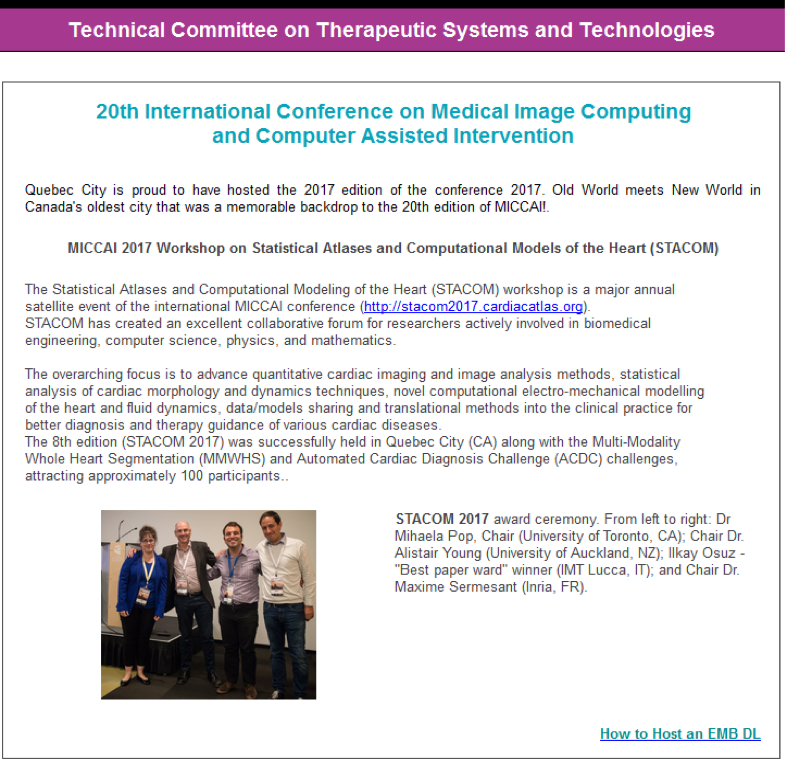
Changes on the Team
New Inria students: Nicolas Cedilnik is a new PhD student at Asclepios working on image-based parametrization of fast models of cardiac electrophysiology, funded by the IHU Liryc, Bordeaux.
Tania Bacoyannis is a new PhD student at Asclepios working on model personalization from non-invasive EP data, funded by the ERC ECSTATIC.
Sunnybrook team: added Dr. Fumin Guo (post-doctoral fellow) and Mengyuan Li (undergraduate intern, University of Toronto), to work on segmentation of high resolution MR images, motion correction algorithms and helping with MR imaging and EP studies.
Toronto University: Mia Mojica & Dr. Mehran Ebrahimi (University of Ontario Institute of Technology, Canada) for help in building a cardiac atlas of fiber directions (from diffusion tensor MR images in healthy pig hearts).
inHEART start up (http://www.inheart.fr, Dr. Jean-Marc Peyrat) for image integration in pre-clinical EP studies.







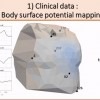 Non invasive cardiac personalisation
Non invasive cardiac personalisation
 Simulation of ventricular tachycardia re-entry circuit
Simulation of ventricular tachycardia re-entry circuit
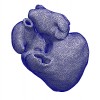 heartMeshFine
heartMeshFine
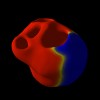 Electrophysiology
Electrophysiology
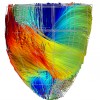 Cardiac Fibres from in vivo Diffusion Tensor Imaging
Cardiac Fibres from in vivo Diffusion Tensor Imaging
